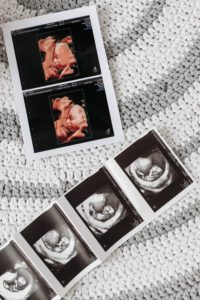Obtaining Assisted Reproduction as a Breast Cancer Patient
For breast cancer patients who are looking to become pregnant but are currently undergoing endocrine therapy, assisted reproduction may be an option. In 2021 alone, nearly 92,000 live births took place because of assisted reproduction. Recent studies have been performed to assess the possibility of using assisted reproduction for HR-positive breast cancer patients.
What Is Assisted Reproduction?
Assisted reproductive technology (ART) involves various techniques that can be used to treat cases of infertility. These fertility treatments are capable of handling sperm and eggs. The process typically occurs by removing the eggs from the ovaries that are then mixed with the sperm to create embryos. Once the embryos are formed, they are placed into the parent’s body. The numerous types of assisted reproduction available to prospective parents include the following:
- In vitro fertilization (IVF)
- Embryo transfers
- Surrogacy arrangements
- Artificial insemination
ART treatments can use donor sperm, donor eggs, or frozen embryos. The person who carries the embryos can be a gestational or surrogate carrier. A gestational carrier is someone who becomes pregnant with sperm from one partner and an egg from the other. In comparison, a surrogate is an individual who provides the egg, is inseminated with the sperm from one member of the couple, and then carries the resulting child.
If you have questions about the differences between a surrogate and a gestational carrier and which one may meet your needs, a New Jersey assisted reproduction lawyer may be able to provide clarification.
What Is HR-positive Breast Cancer?
HR-positive breast cancer is a common type that develops because of the hormone receptors found on breast cells. These receptors pick up the progesterone or estrogen signals that cause cell growth to occur. If the cells have receptors for one or both hormones, breast cancer is considered HR-positive. By identifying whether the tumor requires one or both hormones to grow, it becomes easier to target and treat the cancer.
The primary treatment that is administered to patients who suffer from this form of breast cancer is endocrine therapy. The purpose of this treatment is to reduce the possibility of the cancer returning. Some patients begin receiving the treatment before the surgery takes place. In most cases, the treatment must be taken for five or more years, which may impact a woman’s ability to give birth.

Initial Assisted Reproduction Study
In early December 2023, the San Antonio Breast Cancer Symposium was held among scientists and clinicians to focus on improving the diagnosis and treatment of all types of breast cancer. During the symposium, researchers presented results from the recent POSITIVE trial, which was performed to determine if assisted reproductive technologies impacted breast cancer recurrence rates for patients with HR-positive breast cancer.
Since the average age of childbearing has been increasing over the past decade, more women are being diagnosed with cancer before they have even started a family. Because of the issues that can be caused by endocrine therapy, many patients are choosing to use fertility preservation techniques before starting treatment. ART techniques are also used to increase the chances of a pregnancy. The most common fertility preservation methods involve ovarian stimulation, gonadotropin-releasing hormone analogs, and cryopreservation of ovarian tissue.
The results of the POSITIVE clinical trial indicate that patients who suffer from HR-positive breast cancer can pause their treatment for up to 24 months. During this time, the chances of breast cancer returning shouldn’t increase. The timeline after the initial 24 months remains unclear.
Details from Secondary Study
A secondary analysis was performed to study the outcomes of the POSITIVE trial. Nearly 500 people participated in this trial by pausing endocrine therapy. Just under 75% of these participants became pregnant.
The people who took part in this study used different types of assisted reproduction and fertility preservation. For example, 179 participants used oocyte or embryo preservation before taking part in the trial. Another 215 participants used ART to try to become pregnant.
During this study, researchers discovered that more than 82% of patients who took part in cryopreserved embryo transfer became pregnant. Close to 10% of patients used ovarian stimulation before cryopreservation, which didn’t result in worse disease outcomes. Around 9.7% of breast cancer patients who took part in this procedure went through breast cancer recurrence within two to three years. The rate was just under 9% among patients who didn’t undergo the procedure.
If you are considering starting a family with assisted reproduction technology, there are many moving parts to this process. From sperm donor contracts to pre-birth orders of parentage, numerous types of arrangements can be made before and during assisted reproduction. If you require legal representation, call our New Jersey adoption lawyer today at (856) 429-5005 to schedule a meeting.

